
Fundamentals
In the gentle, sprawling landscape of hair wellness, understanding the very foundations of strand integrity becomes a guiding light. Among the myriad factors influencing the vitality of our textured coils and curls, the concept of Alkaline Damage stands as a significant, yet often quietly misunderstood, force. At its most fundamental, alkaline damage refers to the adverse effects that substances with a high pH, or alkalinity, inflict upon the delicate structure of hair fibers.
Our hair, a marvel of natural engineering, thrives within a slightly acidic environment, typically maintaining a pH balance between 4.5 and 5.5. This natural acidity, often called the ‘acid mantle’ of the hair and scalp, acts as a protective shield, keeping the outermost layer, the Cuticle, smooth and tightly closed.
Imagine the hair cuticle as a series of tiny, overlapping scales, much like shingles on a roof. In its optimal, slightly acidic state, these scales lie flat, creating a resilient, light-reflecting surface that locks in moisture and guards the inner core of the hair. When hair encounters substances with a pH value significantly higher than its natural range—meaning they are more alkaline—a transformative, often detrimental, process begins.
This shift in pH causes the cuticle scales to swell and lift, disrupting their protective arrangement. This opening of the cuticle renders the hair vulnerable, allowing essential moisture to escape and exposing the inner layers to environmental stressors and further harm.
The immediate implications of this cuticle disruption are tangible. Hair that has experienced alkaline exposure may feel rough, appear dull, and become more prone to tangling. It is a fundamental shift from a state of healthy resilience to one of fragility.
Alkaline damage begins when high-pH substances cause the hair’s protective cuticle scales to swell and lift, compromising the strand’s inherent strength and moisture retention.

The PH Scale ❉ A Hair’s Delicate Dance
To truly grasp the meaning of alkaline damage, one must first appreciate the pH scale itself. This numerical spectrum, ranging from 0 to 14, measures the acidity or alkalinity of a substance. A value of 7 signifies neutrality, with numbers below indicating increasing acidity and numbers above representing increasing alkalinity.
Pure water sits at the neutral point, while substances like lemon juice or vinegar are acidic, and household cleaners or lye are highly alkaline. For our hair, maintaining its natural, slightly acidic state is paramount for preserving its structural integrity and overall health.
Understanding this balance helps us discern why certain products or practices can be beneficial or detrimental. When we choose hair care formulations, their pH value directly influences how our hair responds. Products formulated within the hair’s natural acidic range help to seal the cuticle, promoting smoothness and shine. Conversely, those with a higher pH can initiate the process of alkaline damage, setting the stage for a cascade of undesirable outcomes, particularly for textured hair, which often possesses a more open cuticle structure by its very nature.
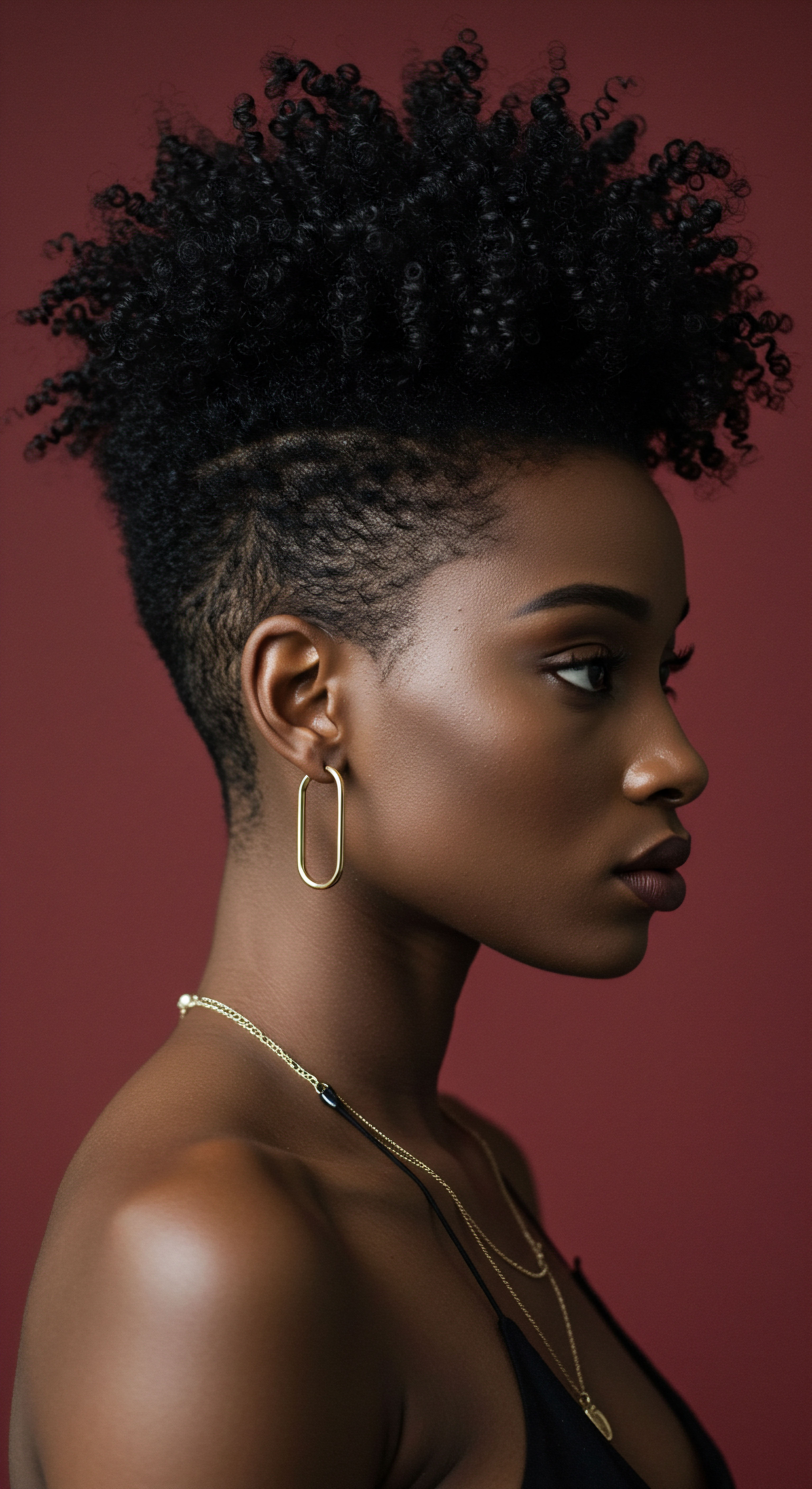
Early Signs of Alkaline Exposure
Recognizing the early signals of alkaline damage allows for timely intervention and adjustment of hair care practices. These signs often begin subtly, manifesting as changes in the hair’s tactile feel and visual appearance.
- Rough Texture ❉ The hair strands may feel coarse or straw-like, losing their characteristic softness.
- Diminished Luster ❉ A healthy sheen gives way to a dull, lifeless look, as the lifted cuticles scatter light rather than reflecting it uniformly.
- Increased Tangles ❉ With cuticles no longer lying flat, individual hair fibers can catch and snag on one another, leading to more frequent knots and tangles.
- Moisture Loss ❉ Hair may feel perpetually dry, even after conditioning, as its ability to hold onto hydration is compromised.
- Frizz ❉ An amplified presence of frizz, especially in humid conditions, becomes apparent as the hair’s outer layer struggles to maintain its smooth alignment.
For individuals with textured hair, these early indicators can be particularly pronounced. The inherent coils and curls already present a unique structural challenge for cuticle alignment, making them inherently more susceptible to the lifting effects of alkaline agents. A conscious awareness of these fundamental shifts allows us to cultivate a hair care approach that truly honors and protects the delicate balance of our strands.

Intermediate
Moving beyond the foundational understanding, the intermediate meaning of Alkaline Damage delves deeper into its manifestation within daily and weekly hair care rituals, particularly for those with textured hair. This exploration reveals how commonplace practices, when misaligned with hair’s inherent needs, can incrementally contribute to compromised hair health. The core meaning here expands to encompass the practical implications of pH imbalance, offering a more nuanced perspective on its presence in our routines. It is not merely a theoretical concept, but a lived experience for many within the textured hair community.
The significance of this understanding lies in identifying the common culprits that introduce alkalinity to our strands. These often hide in plain sight, within products we regularly use, or in the very water we cleanse with. The delicate balance of the hair’s acid mantle, so crucial for maintaining cuticle integrity and moisture retention, can be disrupted by a surprising array of elements. This disruption leads to a cascade of effects, moving beyond superficial changes to impact the very resilience and manageability of textured hair.
Intermediate understanding of alkaline damage unveils how common hair care practices, including certain products and water types, can subtly but steadily erode hair health by disturbing its natural pH.

Common Alkaline Culprits in Hair Care
A deeper description of alkaline damage involves recognizing the specific agents responsible for this phenomenon. For textured hair, which is already prone to dryness and breakage due to its unique structure, these alkaline exposures pose a heightened risk.
- Harsh Shampoos ❉ Many conventional shampoos, especially those designed for deep cleansing or containing sulfates, possess a pH significantly higher than hair’s natural acidity. These formulations can strip the hair of its natural oils and force the cuticle open, leading to increased friction and tangling.
- Chemical Treatments ❉ Processes like permanent hair dyes, bleaching, and perming inherently require alkaline agents to open the cuticle, allowing chemicals to penetrate the hair’s cortex. While necessary for the desired chemical change, improper neutralization or frequent application can leave the hair in a persistently alkaline state, leading to considerable damage.
- Hair Relaxers ❉ These chemical straighteners, historically and culturally significant for many Black and mixed-race individuals, operate at extremely high pH levels (often 9-14) to permanently break the hair’s disulfide bonds. Both lye-based (sodium hydroxide) and no-lye (calcium hydroxide, guanidine carbonate) relaxers, while achieving dramatic textural changes, inherently inflict alkaline damage. The repeated application to new growth often leads to overlap on previously treated hair, exacerbating fragility and breakage over time.
- Hard Water ❉ Water with a high mineral content, common in many regions, is typically alkaline. Regular washing with hard water can leave mineral deposits on the hair, leading to dullness, buildup, and a rough texture, contributing to an imbalanced pH.
- Improper Neutralization ❉ Following alkaline chemical treatments, a crucial step involves neutralizing the hair with an acidic product to restore its pH balance and seal the cuticle. Neglecting or inadequately performing this step leaves the hair vulnerable to continued alkaline effects, perpetuating damage.
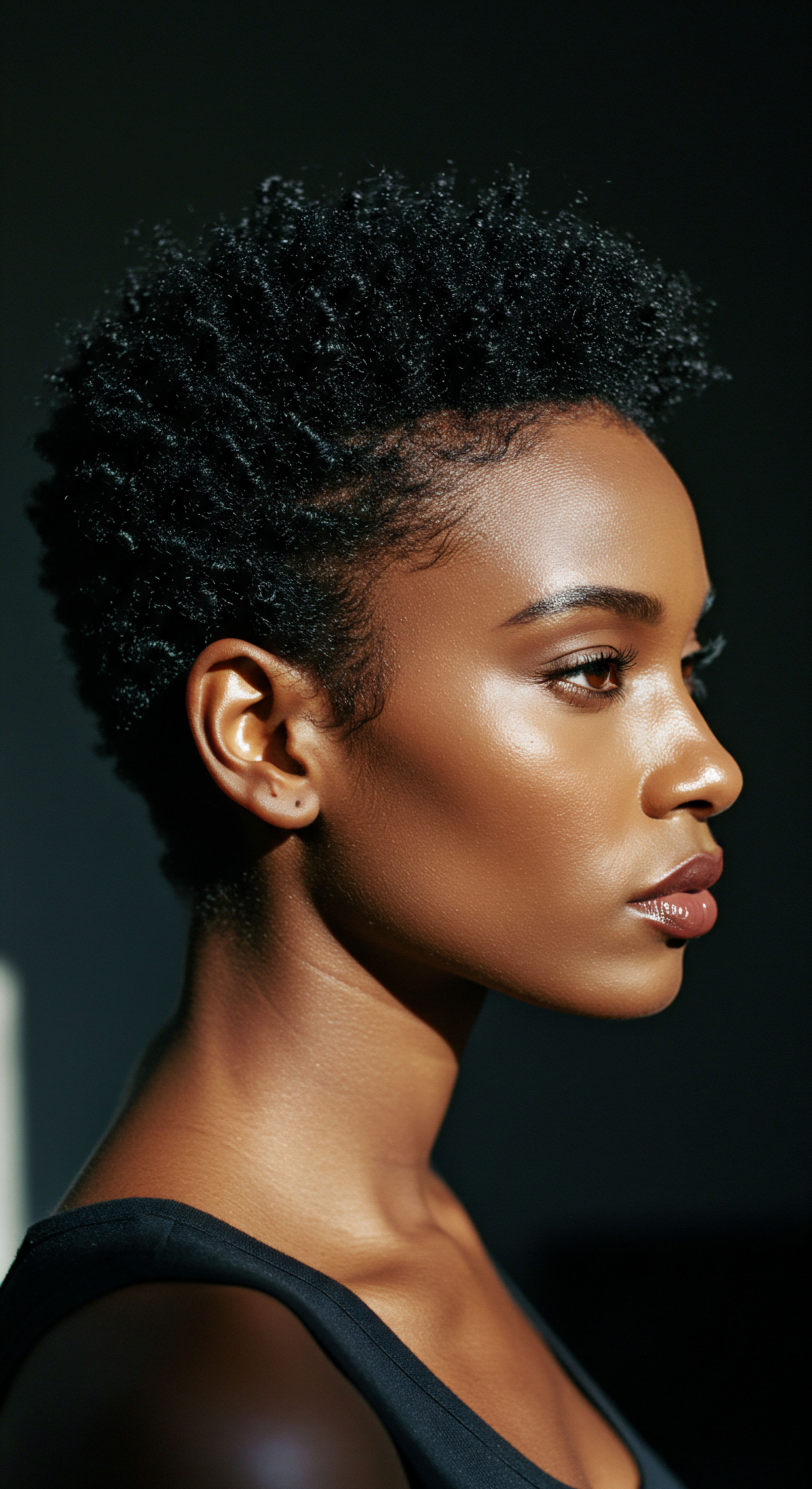
The Progression of Damage ❉ From Frizz to Fragility
The progression of alkaline damage in textured hair is a gradual process, often starting with subtle changes and intensifying over time if left unaddressed. This detailed explanation helps to clarify the insidious nature of consistent alkaline exposure.
Initially, the lifted cuticle scales lead to an increased surface area, making the hair more porous. This enhanced porosity, while sometimes desired for product absorption, also means the hair struggles to retain moisture, becoming chronically dry. The loss of moisture then compromises the hair’s elasticity, rendering it stiff and brittle.
Each brush stroke, every styling attempt, becomes an opportunity for strands to snap and break. This fragility is particularly noticeable at the ends, where split ends proliferate, and along the mid-shaft, leading to visible thinning and a lack of density.
Beyond the structural impact, alkaline damage can also affect the scalp. A disrupted acid mantle on the scalp can lead to dryness, irritation, and even create an environment conducive to bacterial or fungal growth, manifesting as flakiness or itching. The symbiotic relationship between a healthy scalp and thriving hair means that damage to one inevitably impacts the other.
| Alkaline Agent Harsh Shampoos |
| Typical PH Range 5.5 – 9+ |
| Impact on Hair Strips natural oils, lifts cuticle, increases friction and tangling. |
| Alkaline Agent Hair Dyes/Bleach |
| Typical PH Range 8 – 11 |
| Impact on Hair Opens cuticle for penetration, can leave hair vulnerable if not neutralized. |
| Alkaline Agent Hair Relaxers (Lye) |
| Typical PH Range 12 – 14 |
| Impact on Hair Permanently breaks disulfide bonds, severe cuticle damage, protein degradation, scalp burns. |
| Alkaline Agent Hair Relaxers (No-Lye) |
| Typical PH Range 9 – 11 |
| Impact on Hair Breaks disulfide bonds, less caustic to scalp but still damaging to hair fiber. |
| Alkaline Agent Hard Water |
| Typical PH Range 8.5 |
| Impact on Hair Mineral deposits, dullness, rough texture, contributes to pH imbalance. |
| Alkaline Agent Understanding these agents helps in making informed product choices and refining care practices. |
The cumulative effect of intermediate alkaline damage can significantly alter the appearance and feel of textured hair, making it difficult to manage, style, and retain length. This underscores the significance of preventive measures and the consistent application of pH-balancing products to mitigate these effects.
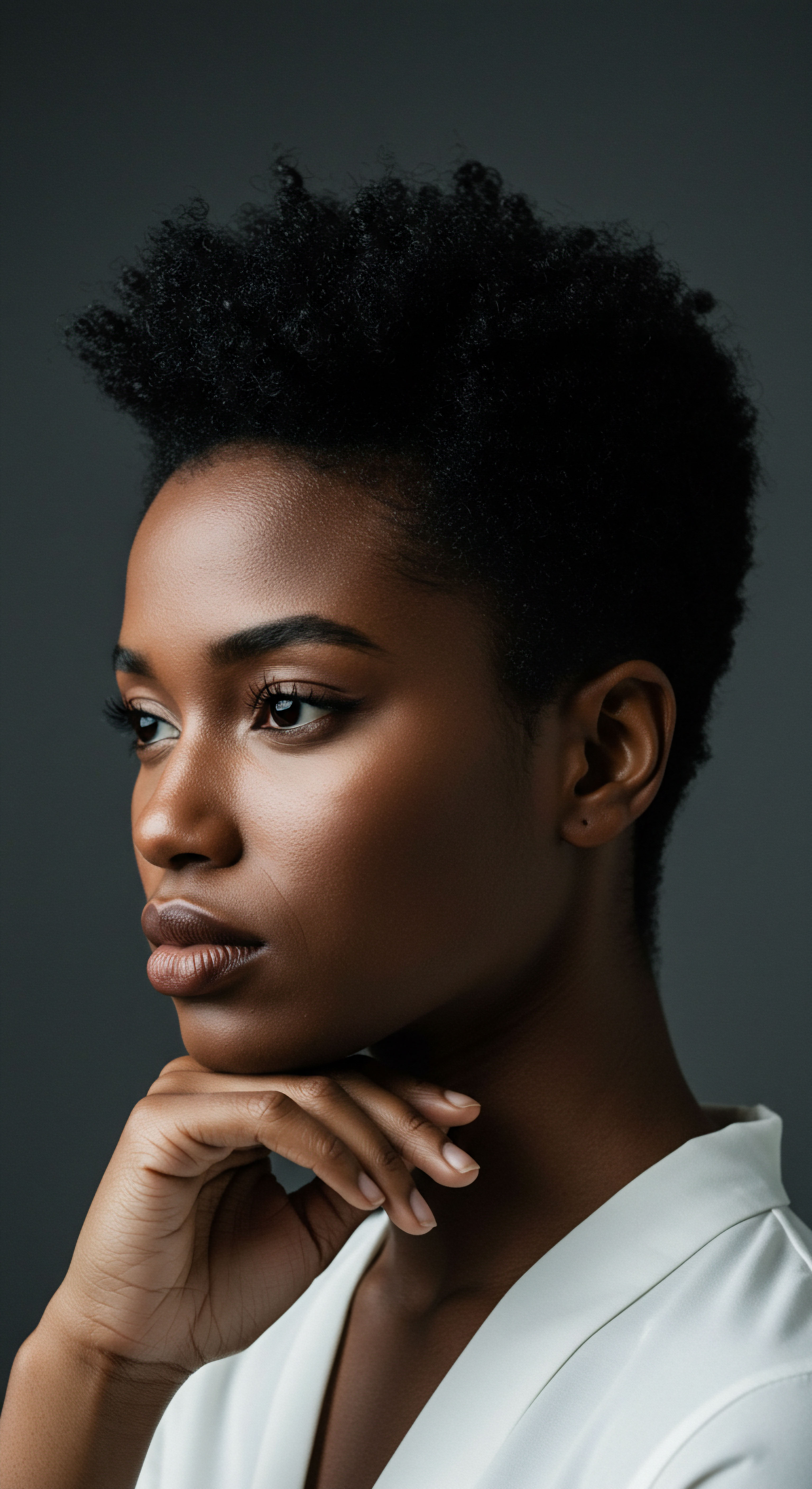
Advanced
The advanced meaning of Alkaline Damage, particularly within the intricate context of textured hair, Black hair, and mixed-race hair heritage and science, transcends simple cuticle lifting. It signifies a complex biochemical assault on the hair fiber’s very architecture, leading to profound, often irreversible, structural and chemical alterations. This comprehensive elucidation of alkaline damage considers its theoretical underpinnings, its historical and socio-cultural implications within specific communities, and its long-term consequences for both hair and holistic well-being. It is a Delineation of the subtle yet devastating interplay between chemical forces and the unique biological composition of highly coiled and curly hair.
At this expert level, we recognize alkaline damage as a multifaceted phenomenon, extending beyond surface-level observations to the molecular heart of the hair. It involves not only the physical disruption of the cuticle but also the hydrolysis of critical protein bonds and the saponification of essential lipids within the hair fiber. This chemical degradation is particularly pertinent for textured hair, which often exhibits a naturally higher porosity and a more delicate protein matrix, making it inherently more susceptible to alkaline agents. The impact of these agents is amplified by historical beauty standards that have, for centuries, pushed individuals with textured hair towards chemical modification, creating a legacy of exposure that merits rigorous analysis.
Alkaline damage, at its core, represents a sophisticated chemical degradation of hair’s protein structure and lipid layers, a process profoundly shaped by historical beauty norms, particularly for textured hair.

The Chemical Signature of Alkaline Degradation
The precise definition of alkaline damage, from a scientific vantage point, centers on specific chemical reactions that occur when hair is exposed to high-pH environments. The hair fiber, primarily composed of keratin protein, relies on disulfide bonds (cysteine cross-links) for its strength and shape. Alkaline agents, especially strong ones like sodium hydroxide found in lye relaxers, initiate a process known as Lanthionization.
This reaction involves the irreversible conversion of cysteine residues into lanthionine, effectively breaking the disulfide bonds and forming new, weaker lanthionine bonds. This structural rearrangement permanently alters the hair’s natural curl pattern, but at a severe cost to its mechanical integrity.
Beyond lanthionization, high alkalinity also leads to the hydrolysis of peptide bonds within the keratin structure, causing protein degradation and a significant loss of tensile strength. Furthermore, the hair’s protective lipid layer, particularly the 18-methyl eicosanoic acid (18-MEA) on the cuticle surface, can undergo Saponification in alkaline conditions. This process removes the hair’s natural hydrophobicity, making it excessively porous, rough, and prone to moisture loss, even after rinsing. The collective outcome is a hair fiber that is not merely damaged but fundamentally compromised, possessing reduced elasticity, increased brittleness, and a diminished capacity for self-repair.

Historical Echoes and Systemic Impact on Textured Hair
The narrative of alkaline damage for Black and mixed-race individuals is inextricably linked to a complex socio-historical context. The pursuit of straightened hair, often achieved through highly alkaline relaxers, became a deeply ingrained practice driven by societal pressures to conform to Eurocentric beauty standards. From the early “conk” mixtures of lye and potatoes used by enslaved people to achieve straighter textures for perceived social and economic advancement, to the widespread commercialization of relaxers in the 20th century, alkaline chemical processing has been a pervasive aspect of Black hair care. This historical context is not merely anecdotal; it underscores a systemic exposure to potent alkaline agents.
This extended use, often beginning in childhood and continuing for decades, presents a unique case study in long-term chemical exposure. A notable example of this profound societal and health impact comes from extensive research ❉ the Black Women’s Health Study, a prospective cohort study that has followed over 59,000 self-identified African American women for more than 25 years. This groundbreaking research revealed that women who reported frequent and long-term use of lye-based hair straightening products—defined as at least seven times a year for 15 or more years—experienced an approximately 30% increased risk of estrogen receptor positive breast cancer compared to more infrequent users.
Other studies, including the Sister Study and those published in the American Journal of Epidemiology, have further indicated a statistically significant association between hair relaxer use and increased risk of uterine leiomyomata (fibroids) and uterine cancer, with some findings suggesting a doubling of risk for frequent users. This evidence highlights a disturbing intersection of beauty practices, chemical exposure, and disproportionate health outcomes within a specific demographic, compelling a deeper inquiry into product safety and the pressures that drive such usage.
| Process Lanthionization |
| Description Irreversible conversion of cysteine (disulfide bonds) to lanthionine. |
| Impact on Hair Structure Permanent alteration of curl pattern, significant loss of tensile strength, increased fragility. |
| Process Peptide Bond Hydrolysis |
| Description Breakdown of protein chains within keratin. |
| Impact on Hair Structure Degradation of hair protein, reduced elasticity, internal structural weakness. |
| Process Saponification of Lipids |
| Description Conversion of hair's protective surface lipids (e.g. 18-MEA) into soap-like substances. |
| Impact on Hair Structure Loss of natural hydrophobicity, increased porosity, chronic dryness, impaired moisture retention. |
| Process These reactions collectively undermine the hair's inherent resilience and protective capabilities. |
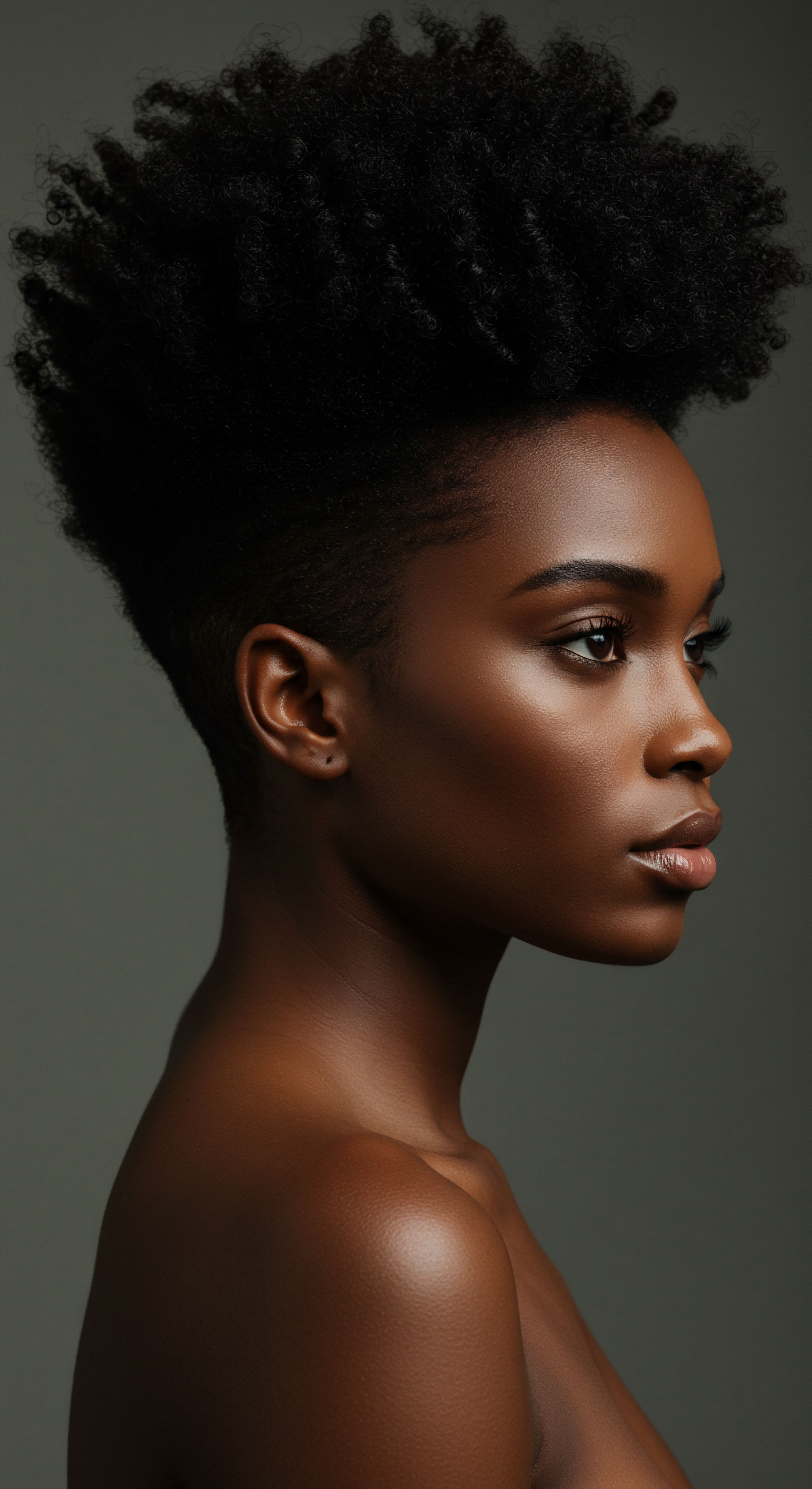
Long-Term Consequences and Path Forward
The long-term consequences of chronic alkaline damage extend beyond the immediate aesthetic concerns. For textured hair, this can manifest as progressive thinning, stunted length retention due to persistent breakage, and a permanent alteration of the natural curl pattern, making it difficult for the hair to return to its original state even with cessation of alkaline treatments. The hair becomes perpetually dry, rough, and highly susceptible to environmental damage. The scalp, too, can suffer from chronic irritation, inflammation, and compromised follicular health, potentially impacting future hair growth cycles.
From an expert perspective, addressing alkaline damage necessitates a multi-pronged approach that integrates scientific understanding with cultural sensitivity. It involves advocating for stricter regulation of hair product ingredients, particularly those marketed to communities historically subjected to harmful beauty standards. It also requires a sustained educational initiative within the textured hair community, empowering individuals with the knowledge to make informed choices that prioritize holistic health over fleeting aesthetic conformity.
The long-term success of any hair care regimen for textured hair, particularly those with a history of alkaline exposure, hinges on a deep respect for its natural chemistry and a commitment to restorative practices that gently coax the hair back towards its optimal, slightly acidic equilibrium. This shift towards a truly informed approach allows for a celebration of natural texture, unburdened by the legacy of damaging practices.
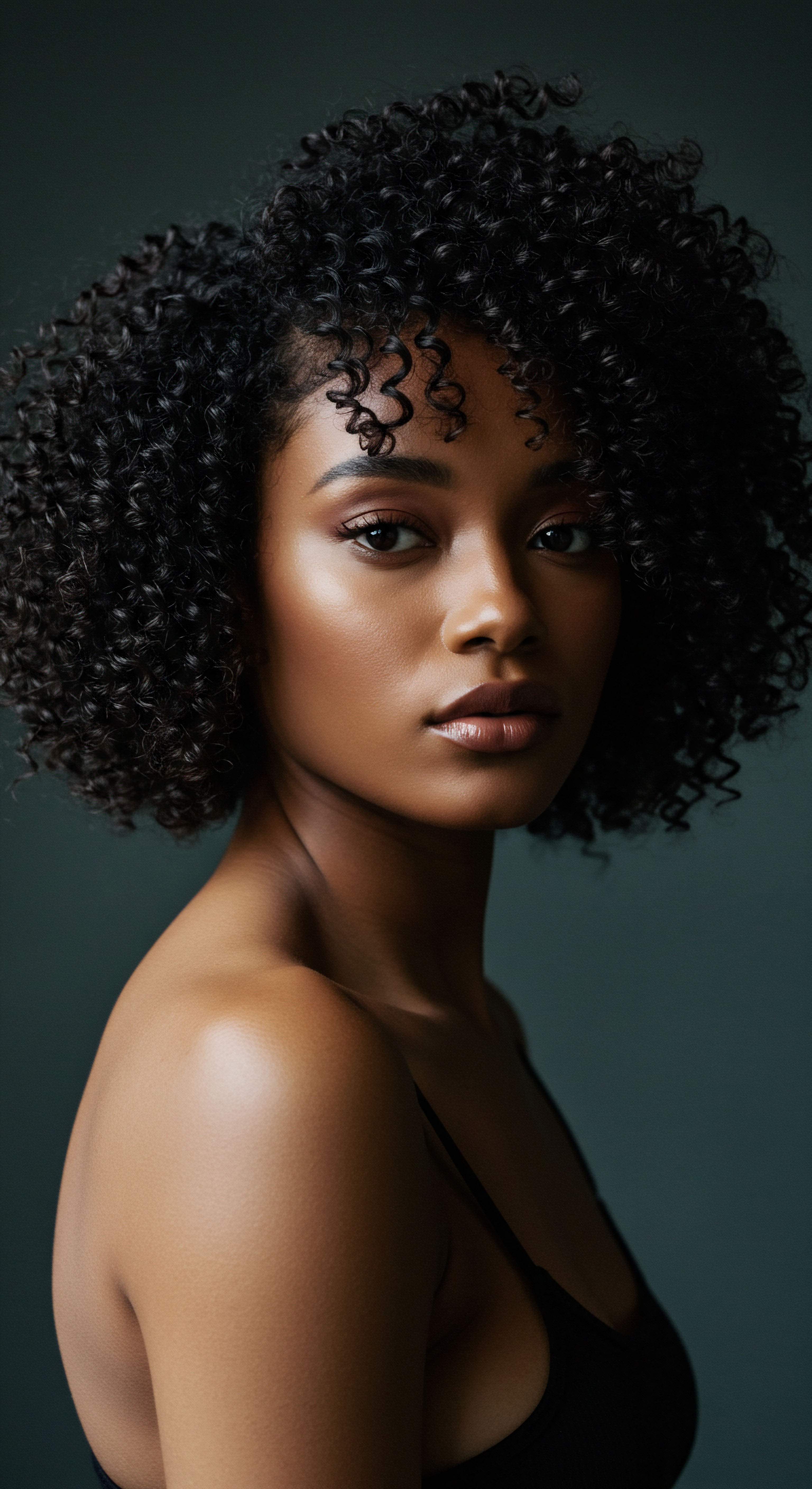
Reflection
As we draw our exploration of Alkaline Damage to a close, a quiet contemplation settles, revealing more than just scientific definitions. It is a moment to recognize the profound connection between our hair, our history, and our well-being. For textured hair, particularly within Black and mixed-race communities, the journey through alkaline damage is not merely a tale of chemical reactions; it is a narrative interwoven with societal expectations, personal choices, and the quiet strength found in reclaiming one’s authentic self. The knowledge we gather, from the precise pH measurements to the historical pressures, becomes a gentle hand guiding us towards more compassionate care.
The path to vibrant, resilient textured hair is paved with understanding and intention. It beckons us to listen to our strands, to honor their unique chemistry, and to make choices that truly nourish rather than diminish. This reflection is an invitation to move beyond superficial beauty ideals, to embrace the inherent splendor of every coil and curl, and to cultivate a relationship with our hair that is rooted in respect, wisdom, and genuine care. It is a celebration of heritage, science, and the quiet revolution of self-acceptance.
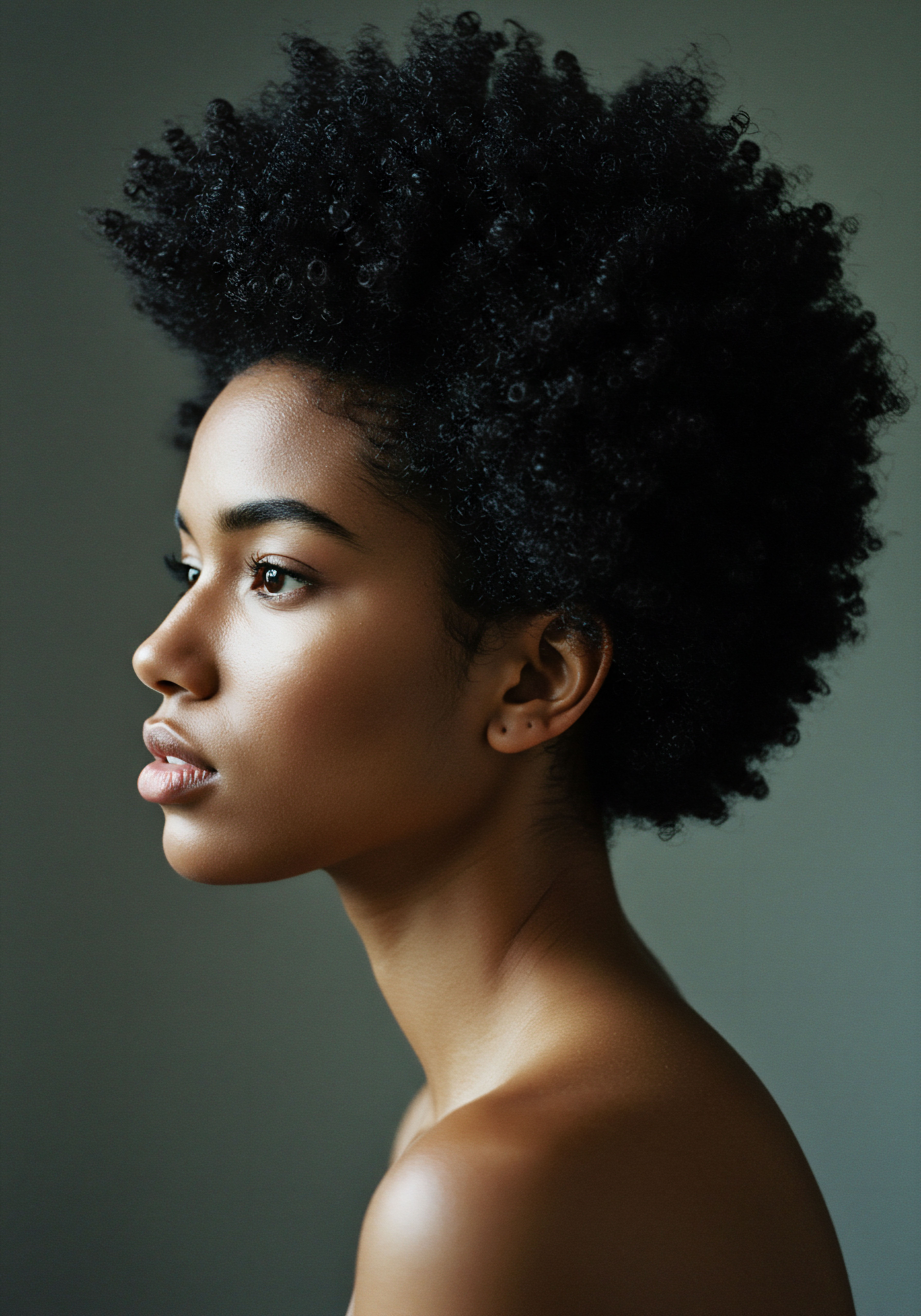
References
- Gavazzoni Dias, M. F. Pichler, J. Adriano, A. Cecato, P. & de Almeida, A. (2014). The shampoo pH can affect the hair ❉ Myth or Reality? International Journal of Trichology, 6(3), 95.
- Robbins, C. R. (2016). Chemical and Physical Behavior of Human Hair. Springer.
- James-Todd, T. et al. (2022). Hair Relaxers and Incident Uterine Leiomyomata in the Black Women’s Health Study. American Journal of Epidemiology, 175(9), 1103-1109.
- Wise, L. A. et al. (2022). Hair relaxer use and risk of uterine leiomyomata in African-American women. American Journal of Epidemiology, 175(9), 1103-1109.
- Bertrand, K. A. et al. (2021). Hair relaxer use and breast cancer risk in the Black Women’s Health Study. Carcinogenesis, 42(10), 1256-1263.
- White, L. A. & Hernandez, J. M. (2018). Hair ❉ A Cultural History. Bloomsbury Publishing.
- Draelos, Z. D. (2011). Hair Cosmetics ❉ An Overview. CRC Press.
- McMichael, A. J. & Alexis, A. F. (2013). Hair and Scalp Diseases ❉ Medical, Surgical, and Aesthetic Treatments. CRC Press.
- Mitchell, J. L. (2009). Hair Story ❉ Untangling the Roots of Black Hair in America. St. Martin’s Griffin.
- Wilcox, A. (2017). Femininity, Hair Relaxers, and the Impact of Beauty Standards on Black Women’s Health. The Activist History Review.
- Silent Spring Institute. (2018). Measurement of Endocrine Disrupting and Asthma-Associated Chemicals in Hair Products Used by Black Women.
- Chang, C. J. et al. (2022). Use of hair products and incident uterine cancer in the Sister Study. Journal of the National Cancer Institute, 114(12), 1636-1644.
- Wilkes, J. (2015). The Science of Hair Care. Wiley.
- Hunter, L. (2011). Beauty Shop Politics ❉ African American Women’s Quest for Racial Agency as Entrepreneurs. University of Illinois Press.
- Pichler, J. et al. (2015). pH of Shampoos ❉ How Important is it for Hair Health? Journal of Cosmetic Dermatology, 14(3), 209-214.